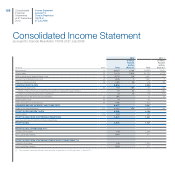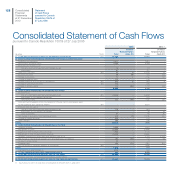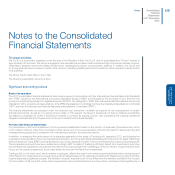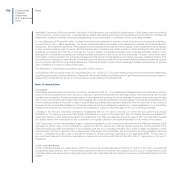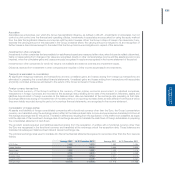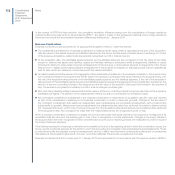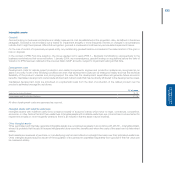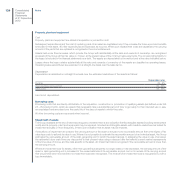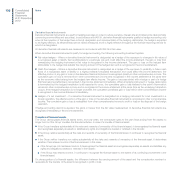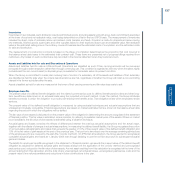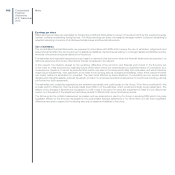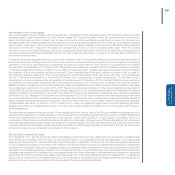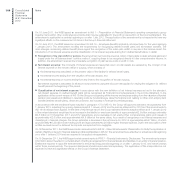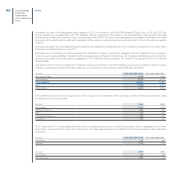Chrysler 2012 Annual Report Download - page 137
Download and view the complete annual report
Please find page 137 of the 2012 Chrysler annual report below. You can navigate through the pages in the report by either clicking on the pages listed below, or by using the keyword search tool below to find specific information within the annual report.
Notes
136 Consolidated
Financial
Statements
at 31 December
2012
Derivative financial instruments
Derivative financial instruments are used for hedging purposes, in order to reduce currency, interest rate and market price risks (primarily
concerning commodities and securities). In accordance with IAS 39, derivative financial instruments qualify for hedge accounting only
when at the inception of the hedge there is formal designation and documentation of the hedging relationship, the hedge is expected
to be highly effective, its effectiveness can be reliably measured and it is highly effective throughout the financial reporting periods for
which it is designated.
All derivative financial instruments are measured in accordance with IAS 39 at fair value.
When derivative financial instruments qualify for hedge accounting, the following accounting treatment applies:
Fair value hedges – Where a derivative financial instrument is designated as a hedge of the exposure to changes in fair value of
a recognised asset or liability that is attributable to a particular risk and could affect the income statement, the gain or loss from
remeasuring the hedging instrument at fair value is recognised in the income statement. The gain or loss on the hedged item
attributable to the hedged risk adjusts the carrying amount of the hedged item and is recognised in the income statement.
Cash flow hedges – Where a derivative financial instrument is designated as a hedge of the exposure to variability in future cash
flows of a recognised asset or liability or a highly probable forecasted transaction and could affect the income statement, the
effective portion of any gain or loss on the derivative financial instrument is recognised directly in other comprehensive income. The
cumulative gain or loss is removed from other comprehensive income and recognised in the income statement at the same time
as the economic effect arising from the hedged item affects income. The gain or loss associated with a hedge or part of a hedge
that has become ineffective is recognised in the income statement immediately. When a hedging instrument or hedge relationship
is terminated but the hedged transaction is still expected to occur, the cumulative gain or loss realised to the point of termination
remains in other comprehensive income and is recognised in the income statement at the same time as the underlying transaction
occurs. If the hedged transaction is no longer probable, the cumulative unrealised gain or loss held in other comprehensive income
is recognised in the income statement immediately.
Hedges of a net investment – If a derivative financial instrument is designated as a hedging instrument for a net investment in a
foreign operation, the effective portion of the gain or loss on the derivative financial instrument is recognised in other comprehensive
income. The cumulative gain or loss is reclassified from other comprehensive income to profit or loss on the disposal of the foreign
operation.
If hedge accounting cannot be applied, the gains or losses from the fair value measurement of derivative financial instruments are
recognised immediately in the income statement.
Transfers of financial assets
The Group derecognises financial assets when, and only when, the contractual rights to the cash flows arising from the assets no
longer hold or if the Group transfers the financial activities. In case of a transfer of financial asset:
if the Group transfers substantially all the risks and rewards of ownership of the financial asset, it derecognises the financial asset
and recognises separately as assets or liabilities any rights and obligations created or retained in the transfer;
if the Group retains substantially all the risks and rewards of ownership of the financial asset, it continues to recognise the financial
asset;
if the Group neither transfers nor retains substantially all the risks and rewards of ownership of the financial asset, it determines
whether it has retained control of the financial asset. In this case:
if the Group has not maintained control, it derecognises the financial asset and recognises separately as assets and liabilities any
rights and obligations created or retained in the transfer;
if the Group has retained control, it continues to recognise the financial asset to the extent of its continuing involvement in the
financial asset.
On derecognition of a financial assets, the difference between the carrying amount of the asset and the consideration received or
receivable for the transfer of the asset is recognised in profit or loss.


